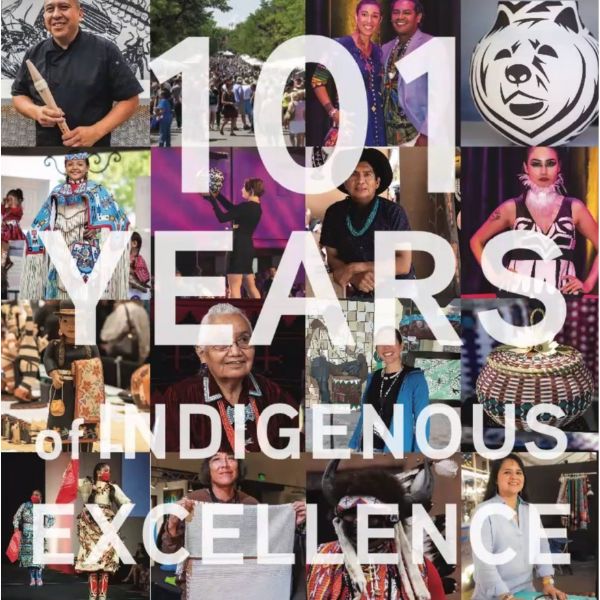
- Details
- By Darren Thompson and Neely Bardwell
On August 19 at 9 a.m. the Sante Fe Indian Market opens. The market has a 101-year history and is the largest juried American Indian art show in the world.
The two-day weekend event is organized by the Southwestern Association for Indian Arts (SWAIA), the event can only be described as legendary as it generates more than $160 million in revenue for artists and the community.
More than 1,000 Native artists from more than 100 Tribal communities in North America and Canada will display their original art. The market also includes film screenings, fashion shows, panel discussions, live entertainment, side events, and more.
Attendees will have the opportunity to view and purchase a wide range of traditional and contemporary Native American art, including jewelry, pottery, textiles, paintings, sculptures, and clothing.
Artists will have the opportunity to show their work and compete for awards in SWAIA’s prestigious judged art competition, with tens of thousands of dollars in prizes.
The market is free and open to the public, although there are some events that require tickets or are open to SWAIA members only, including an artist's reception and a sneak peek at the award-winning art.
Performances include live entertainment with a lineup of Native singers, dancers, drummers, and a presentation from the Native American Rights Fund on their continued fight for tribal sovereignty. There will also be a Native Clothing Contest where Native people from across North America display their traditional regalia and clothing, representing their respective nations.
Closing out the weekend is the event’s 10th Indigenous Fashion Show, featuring seven premier Indigenous designers on the runway at the Santa Fe Community Convention Center Ballroom.
Help us defend tribal sovereignty.
At Native News Online, our mission is rooted in telling the stories that strengthen sovereignty and uplift Indigenous voices — not just at year’s end, but every single day.
Because of your generosity last year, we were able to keep our reporters on the ground in tribal communities, at national gatherings and in the halls of Congress — covering the issues that matter most to Indian Country: sovereignty, culture, education, health and economic opportunity.
That support sustained us through a tough year in 2025. Now, as we look to the year ahead, we need your help right now to ensure warrior journalism remains strong — reporting that defends tribal sovereignty, amplifies Native truth, and holds power accountable.
 The stakes couldn't be higher. Your support keeps Native voices heard, Native stories told and Native sovereignty defended.
The stakes couldn't be higher. Your support keeps Native voices heard, Native stories told and Native sovereignty defended.
Stand with Warrior Journalism today.
Levi Rickert (Potawatomi), Editor & Publisher

